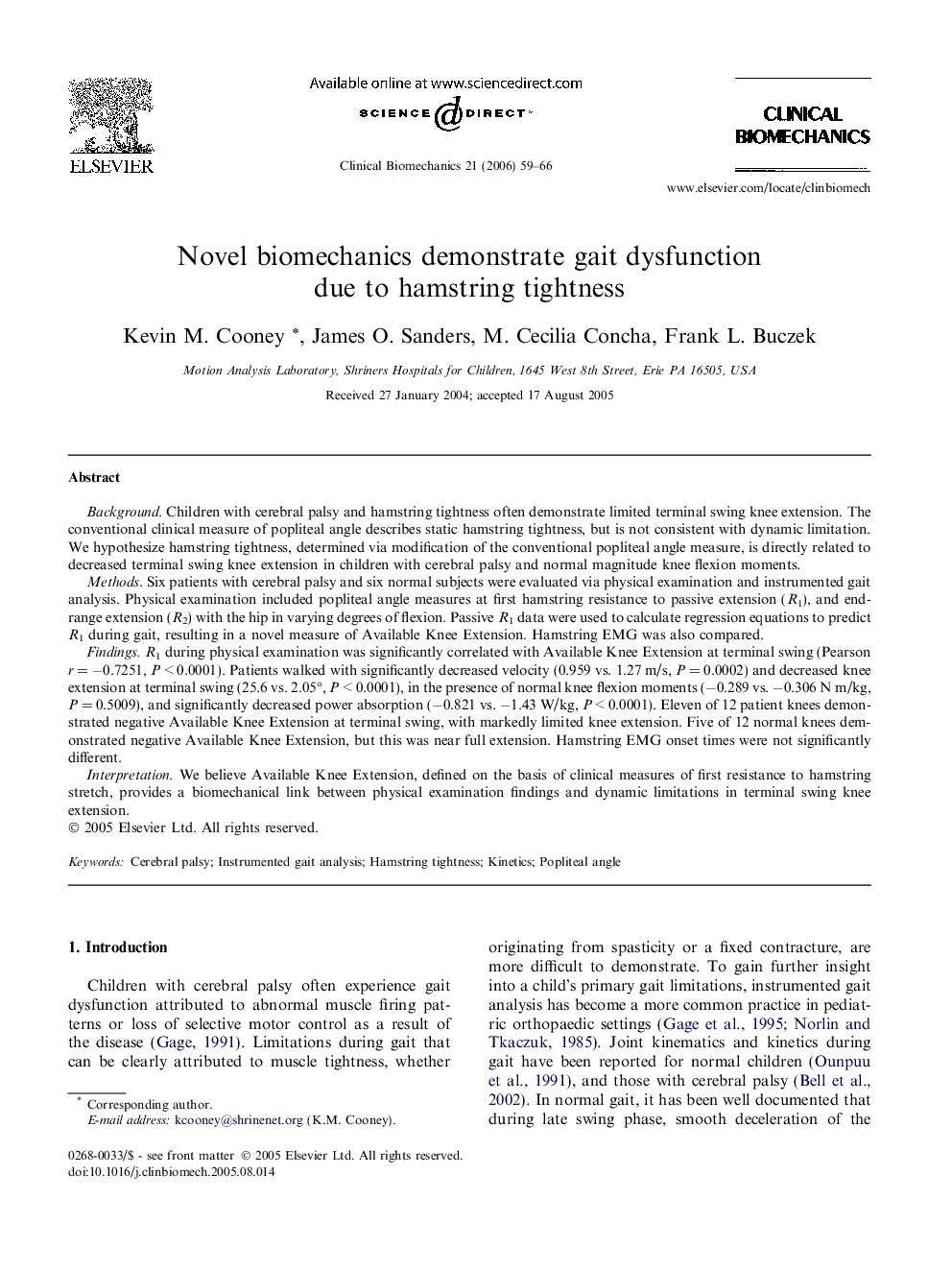| Article ID | Journal | Published Year | Pages | File Type |
|---|---|---|---|---|
| 4051689 | Clinical Biomechanics | 2006 | 8 Pages |
Background. Children with cerebral palsy and hamstring tightness often demonstrate limited terminal swing knee extension. The conventional clinical measure of popliteal angle describes static hamstring tightness, but is not consistent with dynamic limitation. We hypothesize hamstring tightness, determined via modification of the conventional popliteal angle measure, is directly related to decreased terminal swing knee extension in children with cerebral palsy and normal magnitude knee flexion moments.Methods. Six patients with cerebral palsy and six normal subjects were evaluated via physical examination and instrumented gait analysis. Physical examination included popliteal angle measures at first hamstring resistance to passive extension (R1), and end-range extension (R2) with the hip in varying degrees of flexion. Passive R1 data were used to calculate regression equations to predict R1 during gait, resulting in a novel measure of Available Knee Extension. Hamstring EMG was also compared.Findings. R1 during physical examination was significantly correlated with Available Knee Extension at terminal swing (Pearson r = −0.7251, P < 0.0001). Patients walked with significantly decreased velocity (0.959 vs. 1.27 m/s, P = 0.0002) and decreased knee extension at terminal swing (25.6 vs. 2.05°, P < 0.0001), in the presence of normal knee flexion moments (−0.289 vs. −0.306 N m/kg, P = 0.5009), and significantly decreased power absorption (−0.821 vs. −1.43 W/kg, P < 0.0001). Eleven of 12 patient knees demonstrated negative Available Knee Extension at terminal swing, with markedly limited knee extension. Five of 12 normal knees demonstrated negative Available Knee Extension, but this was near full extension. Hamstring EMG onset times were not significantly different.Interpretation. We believe Available Knee Extension, defined on the basis of clinical measures of first resistance to hamstring stretch, provides a biomechanical link between physical examination findings and dynamic limitations in terminal swing knee extension.
